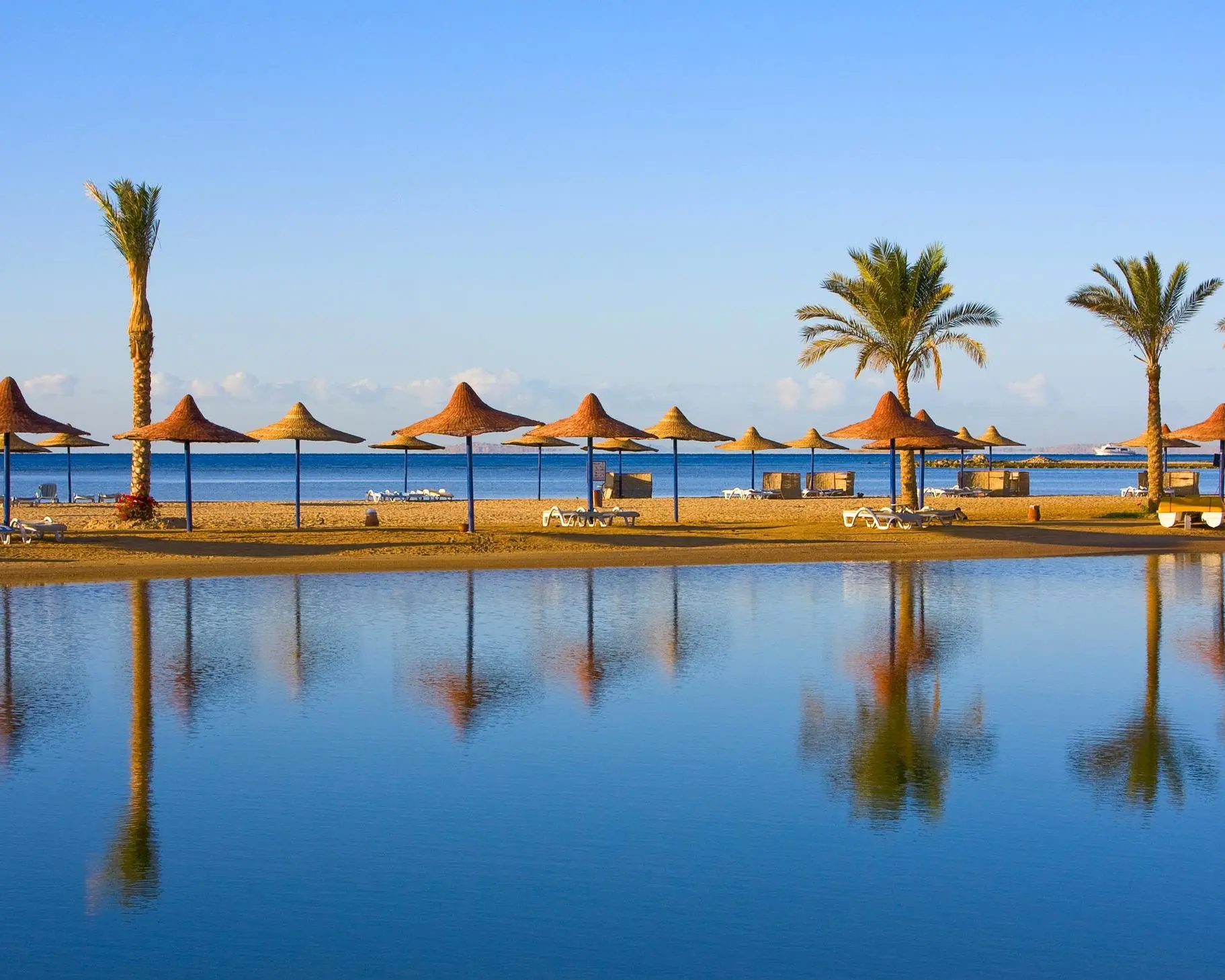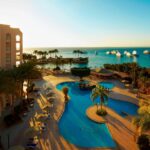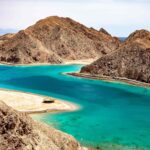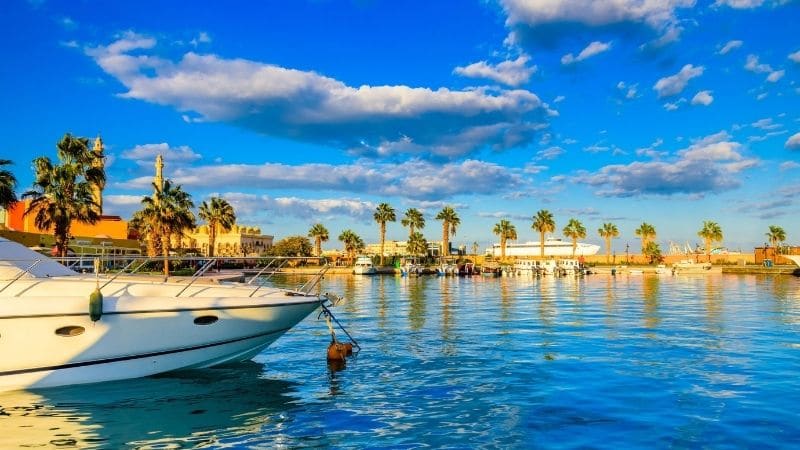
Hurghada is one of Egypt’s most beloved coastal destinations — a vibrant blend of turquoise waters, golden sands, and endless sunshine. Tourists flock here for snorkeling trips, island cruises, and desert safaris. But beyond the bustling marina and famous beaches lies another side of Hurghada: a world of quiet lagoons, ancient monasteries, local markets, and hidden fishing villages where time seems to stand still.
If you’re a traveler who wants to go beyond the ordinary, this guide to hidden gems near Hurghada is for you. We’ll explore lesser-known excursions, authentic cultural encounters, and peaceful spots that reveal the real soul of the Red Sea coast.
1. The Magic of Hidden Lagoons – Nature’s Secret Havens

While most visitors spend their days on crowded beaches or well-known islands like Giftun and Orange Bay, there are quiet lagoons just a short drive or boat ride away that remain virtually untouched.
Abu Minqar Island – The Forgotten Sandbank
Located only 15 minutes from Hurghada Marina, Abu Minqar Island is one of the best-kept secrets in the Red Sea. This tiny sand island offers shallow turquoise water, perfect for snorkeling and photography. There are no restaurants, no umbrellas, and no crowds — just pure tranquility surrounded by coral reefs.
Because of its minimal human activity, marine life here thrives. It’s common to spot butterflyfish, parrotfish, and even rays gliding silently beneath the surface. For travelers seeking solitude and natural beauty, this is a must-visit destination.
El Gouna’s Hidden Lagoons
North of Hurghada lies El Gouna, a modern resort town famous for its canals and eco-friendly design. Beyond the luxury hotels, however, there are hidden lagoons accessible only by small boats or paddleboards. These calm, shallow waters are ideal for a peaceful morning swim or a sunset paddle.
Bring your camera — the contrast between the turquoise water and the golden desert hills creates stunning photo opportunities, especially during golden hour.
2. Bedouin Markets – Discover the Heart of Desert Culture

To truly understand Egypt’s Red Sea region, you must go inland — into the desert, where the Bedouins still live according to ancient traditions. Many visitors join organized desert safaris, but few venture into the authentic Bedouin markets, where locals trade goods, tell stories, and share their timeless lifestyle.
Bedouin Market near Sahl Hasheesh
Every week, just outside Sahl Hasheesh, a small market springs up in the desert. Here you can find handmade silver jewelry, woven scarves, natural oils, and aromatic spices. The atmosphere is genuine and warm, with traders eager to explain the origins of their products.
Unlike the bustling bazaars of Hurghada city, this market feels intimate. You can sip Bedouin tea, try traditional bread baked on hot stones, and enjoy a slice of life that remains unchanged for generations. It’s a perfect place to buy souvenirs that carry real cultural value.
El Dahar – Old Hurghada’s Souk
While technically within the city, El Dahar’s old market deserves mention as one of Hurghada’s most atmospheric spots. It’s a maze of narrow streets filled with colorful textiles, copper lamps, and the scent of incense. Bargaining is expected, but always done with a smile.
Visiting El Dahar at dusk, when locals shop for dinner ingredients and the call to prayer echoes through the air, is an experience that connects you deeply to everyday Egyptian life.
3. Desert Monasteries – A Spiritual Journey Through Time
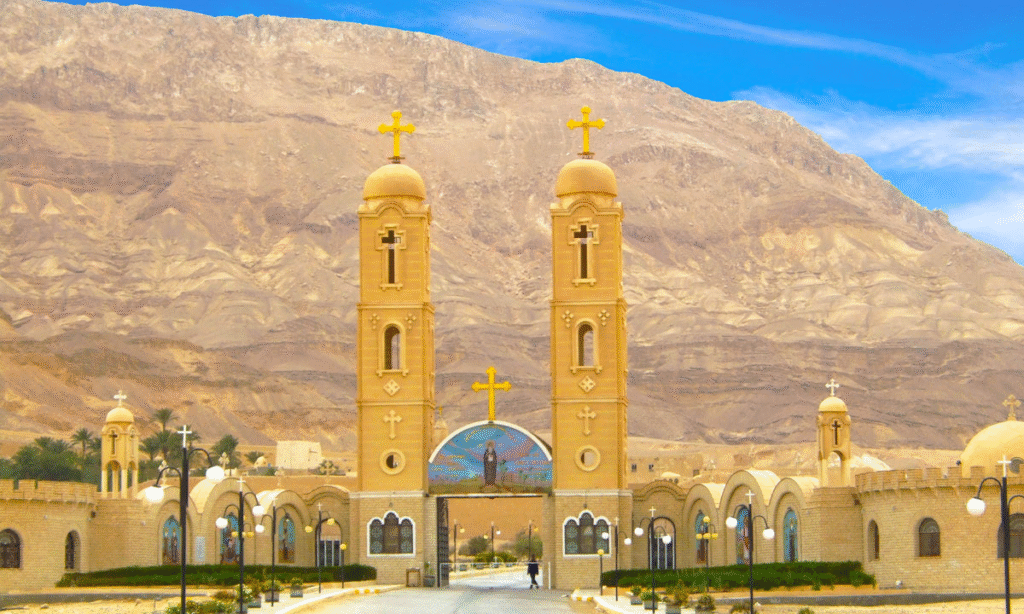
Not far from the glittering coastline lies a world of silence and spirituality. The Eastern Desert of Egypt hides some of the oldest Christian monasteries in the world, offering a glimpse into a different era of Egyptian history.
Monastery of St. Anthony – The Oldest in the World
About a 3-hour drive north from Hurghada, nestled deep in the mountains, stands the Monastery of St. Anthony. Founded in the 4th century AD, it’s considered the world’s oldest operating Christian monastery.
The journey itself is breathtaking — winding through rocky desert valleys before reaching an oasis of palm trees and ancient stone walls. Inside, you’ll find beautifully preserved frescoes, manuscripts, and chapels. The monks still live here, following a simple life of prayer and self-sufficiency.
It’s a place that radiates peace — ideal for travelers interested in history, religion, or simply a meditative escape from the busy resort life.
Monastery of St. Paul – A Hidden Neighbor
Nearby lies the Monastery of St. Paul, often overshadowed by St. Anthony but equally fascinating. The monastery is carved into a cliffside and offers stunning views over the desert landscape.
Visitors can explore ancient caves, learn about early Christian hermits, and even share a quiet moment with the resident monks. It’s a profound reminder that Egypt’s Red Sea region isn’t just about beaches — it’s also a cradle of spiritual heritage.
4. Mangrove Forests – Egypt’s Unexpected Green Miracle

When you imagine Egypt, mangroves probably aren’t the first thing that comes to mind. Yet along the Red Sea coast, there are rare pockets of mangrove forests, ecosystems that thrive where desert meets sea. They are crucial for marine biodiversity and serve as nurseries for young fish and birds.
The Mangroves of El Qulaan – Nature at Its Purest
Located in Wadi El Gemal National Park, about three hours south of Hurghada, the mangrove forest of El Qulaan is one of Egypt’s most unique natural wonders. Wooden walkways lead visitors over crystal-clear waters where mangrove roots rise from the sand like sculptures.
Here, you can spot herons, flamingos, and other migratory birds resting among the trees. The water is shallow and calm, perfect for wading and observing marine life up close.
The nearby Bedouin village offers fresh seafood lunches and shaded spots to rest. It’s one of the most peaceful places you’ll ever visit — no crowds, no music, just the sounds of wind and waves.
Safaga’s Hidden Lagoon
Closer to Hurghada, near the quiet town of Safaga, small patches of mangroves can be found around the lagoon areas. Local fishermen often use them as natural harbors. The scenery is raw and untouched — ideal for eco-tourists and photographers seeking rare beauty.
5. Fishing Villages – Authentic Red Sea Living

For a true taste of local life, visit one of the traditional fishing villages that dot the coastline south of Hurghada. These communities existed long before tourism transformed the region, and they still preserve a slower, simpler rhythm of life.
Safaga – A Harbor of Tradition
Once a major trading port, Safaga has evolved into a quiet coastal town known for its healing black sand and relaxed vibe. Early in the morning, you can watch fishermen returning from the sea, sorting their catch and repairing nets on the pier.
Stroll through the narrow streets, visit the local fish market, and try grilled sea bream or calamari at one of the small, family-run restaurants. Safaga also offers excellent diving spots that are far less crowded than those in Hurghada.
El Quseir – The Red Sea’s Hidden Gem
Further south lies El Quseir, one of the oldest towns on the Red Sea. Its history stretches back to the times of the pharaohs, when it served as a port for trade with Arabia. Today, the town blends ancient charm with quiet coastal beauty.
The old fortress overlooking the sea tells stories of centuries past, while the harbor buzzes gently with daily life. Colorful fishing boats, traditional coffee shops, and children playing by the water — this is Egypt in its purest form.
Many travelers describe El Quseir as the place where you can still feel the spirit of the old Red Sea — before mass tourism arrived.
6. The Desert Beyond Hurghada – Hidden Valleys and Starry Nights

Hurghada’s desert is vast and full of surprises. While most tourists stick to the standard quad safaris, adventurous travelers can explore hidden valleys, ancient rock formations, and remote Bedouin settlements that reveal the deep mystery of the land.
Wadi Hammamat – The Ancient Caravan Route
Between Hurghada and Quseir lies Wadi Hammamat, a dry riverbed that once served as a trade route between the Nile and the Red Sea. The walls of the valley are covered with ancient petroglyphs — carvings of animals, boats, and hieroglyphs left by travelers thousands of years ago.
Walking through Wadi Hammamat feels like stepping back in time. Few tours come here, so you’ll often have the place entirely to yourself. It’s a perfect excursion for history enthusiasts and photographers.
Starry Nights in the Arabian Desert
Spend an evening under the stars in the Eastern Desert, far away from the city lights. Many local guides organize private stargazing tours, where you can lie on the soft sand, sip sweet Bedouin tea, and watch the Milky Way stretch across the sky.
Some camps even offer telescopes for a closer look at planets and constellations. This peaceful experience is a reminder of how vast and magical Egypt’s desert truly is.
7. Local Food Experiences – Eat Like an Egyptian
Exploring hidden gems near Hurghada isn’t just about landscapes — it’s also about flavors. Local food experiences give you a delicious glimpse into daily Egyptian life.
Bedouin Dinner in the Desert
Many small family-run safari camps offer authentic Bedouin dinners, cooked slowly over charcoal and served under the stars. Expect dishes like grilled chicken, lentil soup, rice with herbs, and freshly baked flatbread.
Sharing a meal in this setting is more than just eating — it’s a cultural exchange. You’ll hear music, learn about desert traditions, and perhaps even try smoking a shisha under the open sky.
Street Food and Local Cafés in Old Hurghada
Skip the hotel buffet and wander through Old Hurghada (El Dahar) in the evening. Try koshari (a mix of pasta, lentils, and tomato sauce), falafel sandwiches, or fresh sugarcane juice. Small cafés serve strong Egyptian coffee and mint tea — the perfect end to a day of discovery.
8. Eco-Tourism and Responsible Travel
The beauty of these hidden places depends on how we treat them. When exploring off-the-beaten-path Hurghada, it’s vital to travel responsibly.
- Avoid littering: Take your trash back with you, especially in desert or island areas.
- Respect local culture: Ask before taking photos of people, especially in villages.
- Support locals: Buy crafts directly from artisans, eat at family-owned restaurants, and tip fairly.
- Protect the reefs: Never touch or step on coral. Use reef-safe sunscreen when snorkeling.
By traveling thoughtfully, you help preserve these treasures for future generations — and experience Egypt in its most genuine form.
9. Planning Your Off-the-Beaten-Path Adventure
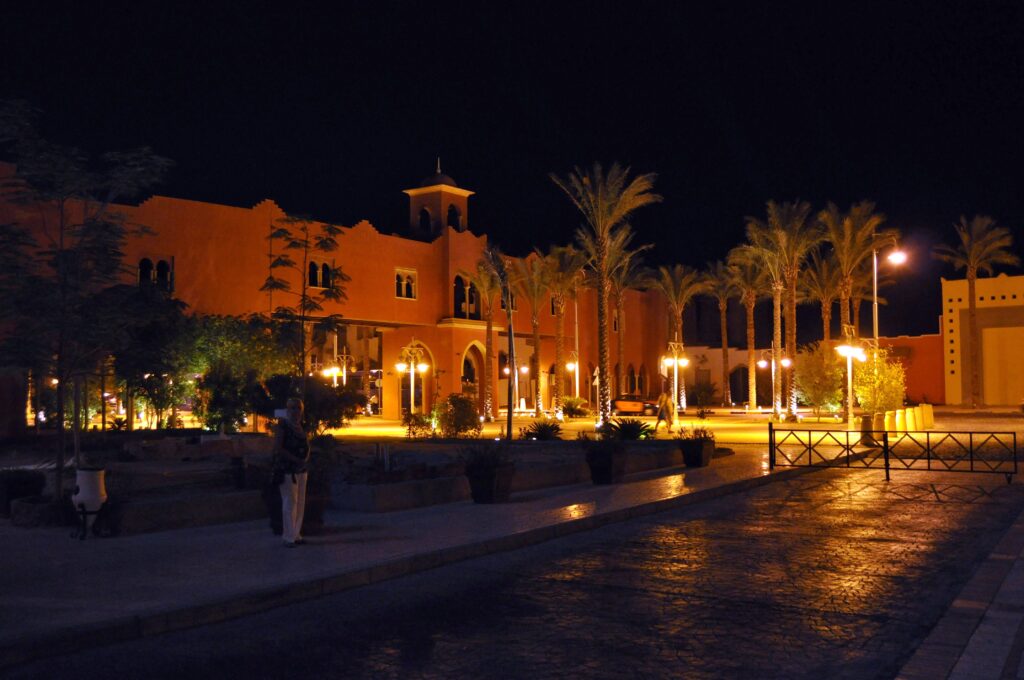
To explore Hurghada’s hidden gems, a bit of planning goes a long way.
- Transportation: Local guides or small tour companies offer private trips to most of these destinations. You can also rent a car, but always check road conditions.
- Timing: The best seasons for exploration are spring (March–May) and autumn (October–November), when temperatures are pleasant.
- Safety: Egypt’s tourist zones, including Hurghada, are very safe. Still, bring plenty of water, sunscreen, and a hat for desert trips.
- Gear: Comfortable shoes, snorkeling equipment, and a camera are essentials. For desert tours, a scarf (Arafatka) will protect you from sand and sun.
10. Final Thoughts – The Real Hurghada Awaits
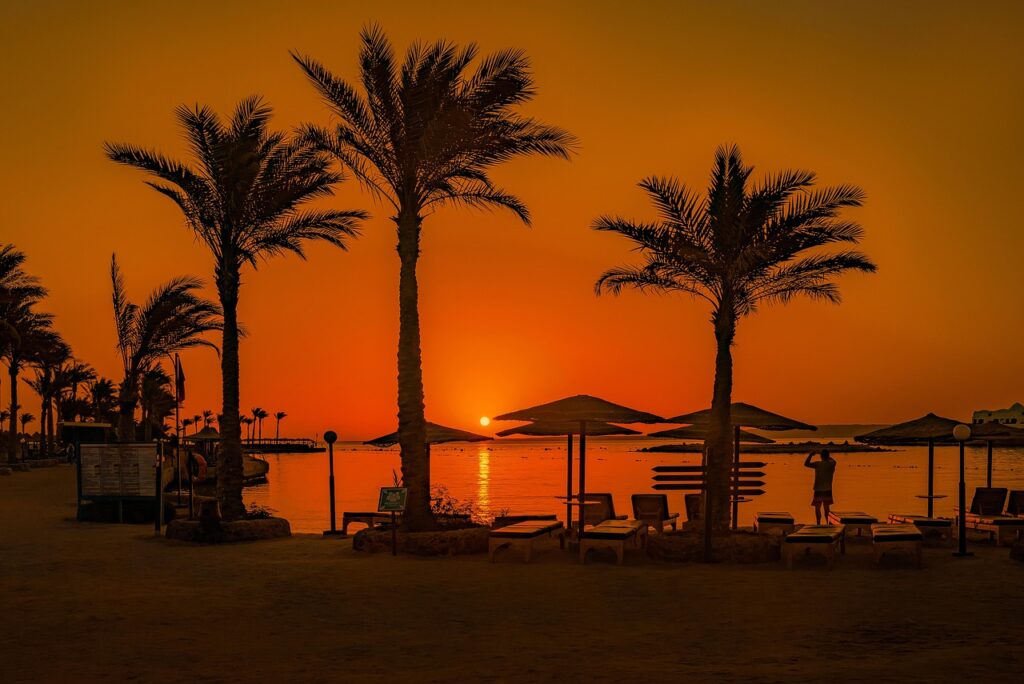
Hurghada may be famous for its resorts and nightlife, but its true charm lies in the hidden corners — the quiet lagoons, mystical monasteries, authentic Bedouin markets, and ancient fishing villages that dot its surroundings.
Exploring these lesser-known excursions isn’t just about avoiding crowds. It’s about connecting — with nature, with people, and with a culture that has thrived for thousands of years between desert and sea.
So next time you visit Egypt’s Red Sea coast, leave the main road behind. Wander into the unknown, follow the scent of spices from a Bedouin market, listen to the waves in a forgotten lagoon, and watch the stars rise over the desert.
That’s where the real Hurghada lives — in its hidden gems, waiting for you to discover them.

